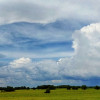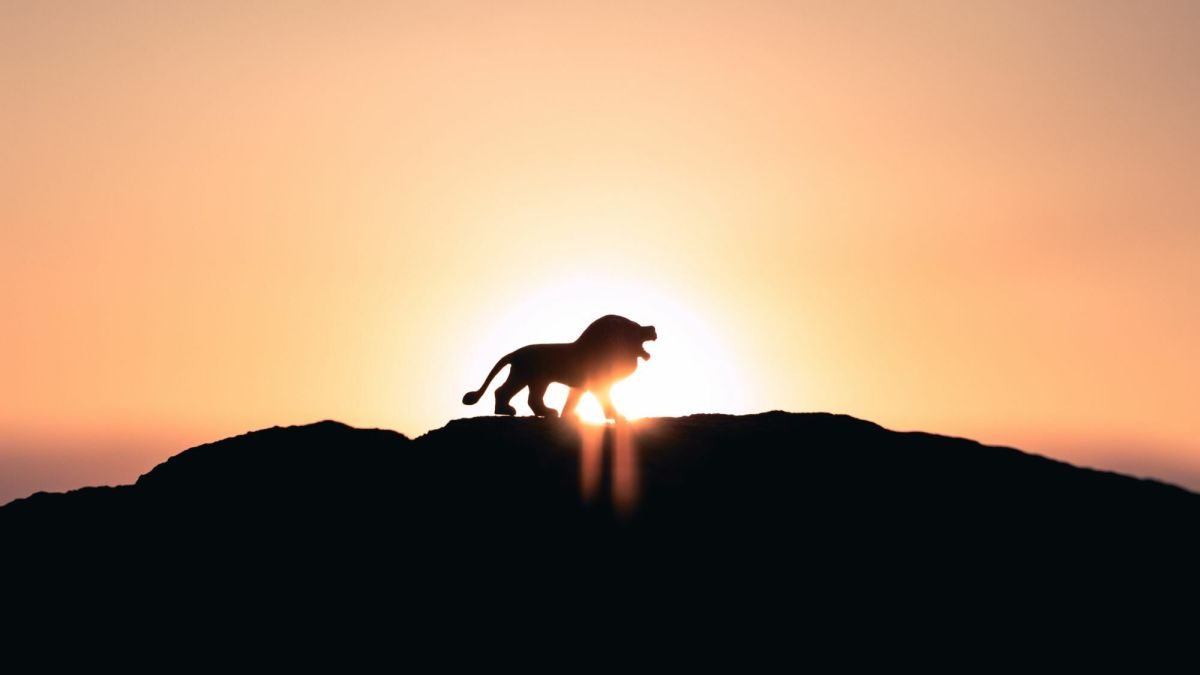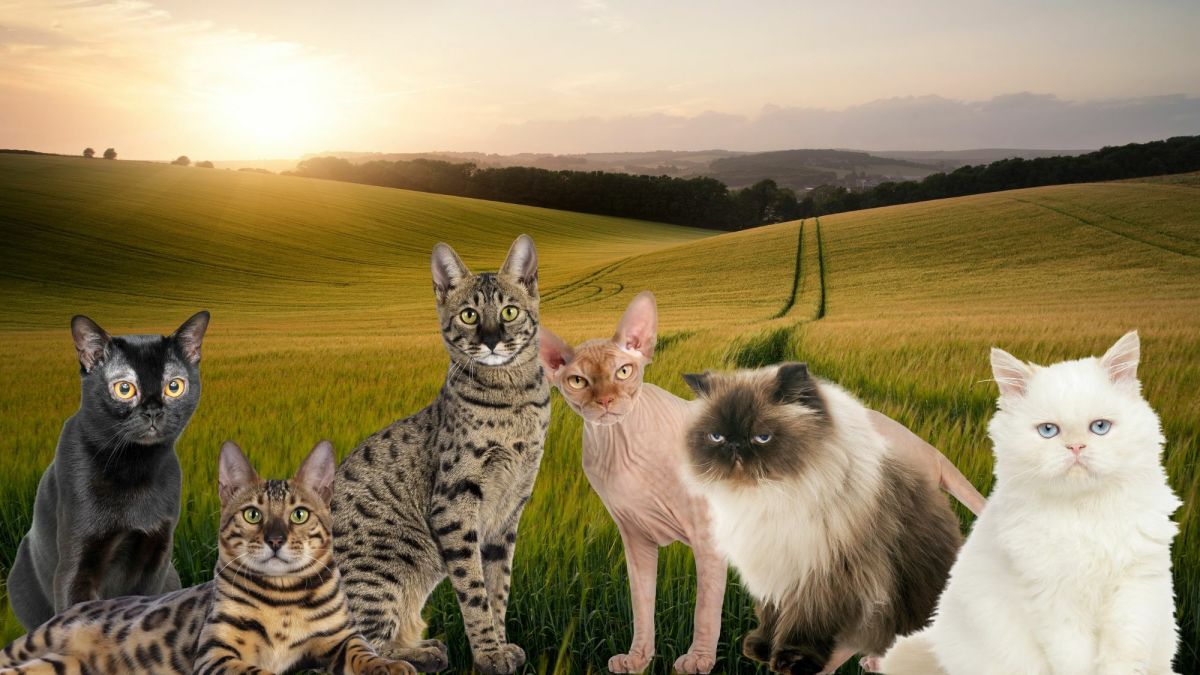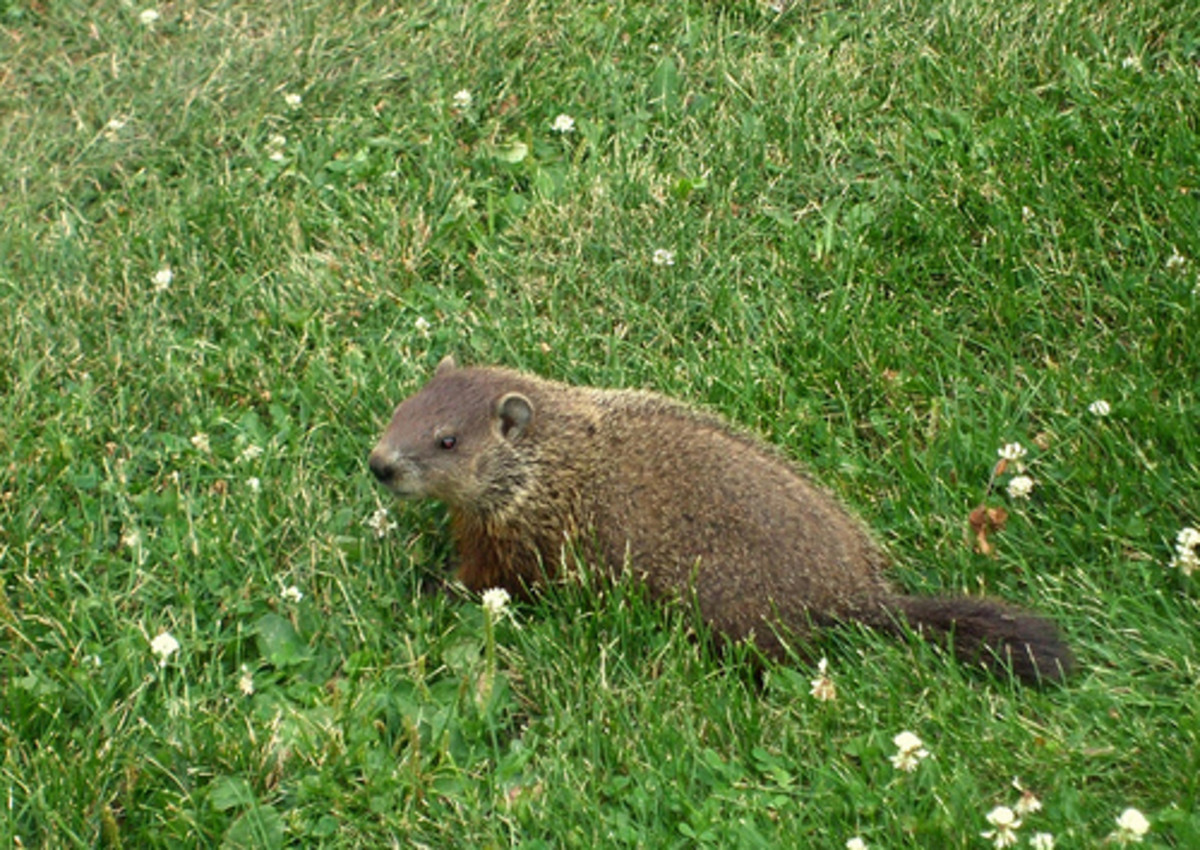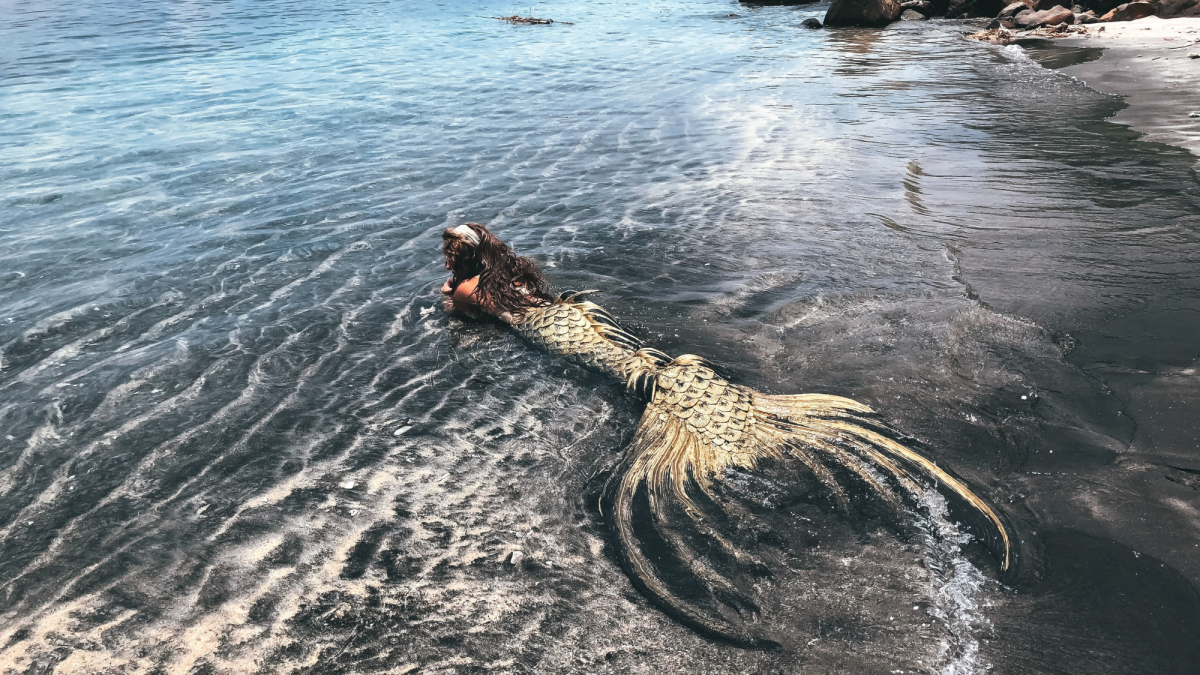JUST BECAUSE YOU SAW IT DOESN'T MEAN IT EXISTS
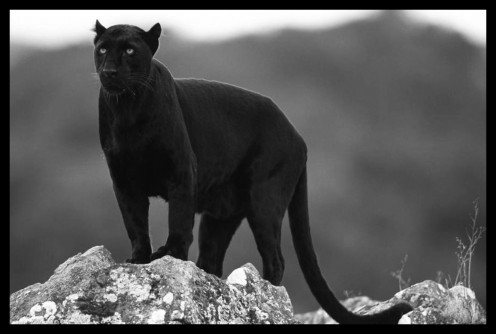
BIG CAT SIGHTINGS VS. SCIENCE
So often, people in a given area will report unusual animal sightings. On a grand scale, for example, controversial sightings can include creatures such as the Yeti, the Chupacabra, and other notorious critters of legend. On a local scale, urban communities often report sightings of bears, coyotes, lions and large cats and other animals which are not considered indigenous to the area. I live in one such community, and for several years we have been haunted – and hunted – by something large enough to spark controversy. The creatures in question are – if nothing else – very big cats.
Before we discuss why this creature cannot possibly exist in our neck of the woods, I will share with you my own experiences, in addition to accounts shared by friends. My first encounter happened one summer evening about ten years ago. My husband and I were visiting some friends. These good people lived on a nice piece of rural property which backed up to several hundred wooded acres, all of which were owned by the power company. These friends had rabbits, which resided in hutches located in the couple’s front yard. These hutches stood about three feet off the ground, with the roofline standing at more than five feet. At dusk, my friend suggested we call all of the children inside because it was "unsafe for them to continue playing in the yard." When I inquired why, she told me they had a curious panther roaming the area. What?? Less than an hour later, the dog barked and the motion sensor lights came on; something was indeed roaming their yard. Imagine my surprise when I (and they) looked out from their living room window to witness a very large black cat, with a very long tail, slink over to the rabbit hutches. This beast stood on its hind legs, pawing aggressively at the cage doors, in search of a meal. While I felt sorry for the terrified rabbits, I could not believe the height of this cat! Standing, it was easily as tall as the top of the hutch. After a few minutes, it crept away, disappearing into the dark woods at the edge of their yard. This occurred in Jemison, Alabama, which is located in the central part of the state.
Fast forward eight years. It is a warm spring day – May to be exact – and it is a Sunday. My three children and I had gone to the grandparent’s house for lunch and we were on our return trip home. We were again in Jemison, traveling down a well-used two lane highway lined with houses. The sun was shining and it was 3:30 in the afternoon. Up ahead, preparing to cross the road, there appeared to be a very large dog – a full grown Boxer I assumed – on the right side. It was walking across, slowly, and had something in its mouth. As we neared the animal, I slowed to15 mph and continued to brake. We all fell silent – because we were in shock. It was NOT a dog at all. It was an enormous cat – one the size of a 60 lb dog – and it had a duck in its mouth. By now I had come to a complete stop and the kids were excited. I noticed a pond to my right, and there were other ducks in the pond. The cat never seemed to notice our existence, and it never sped its pace as it ambled across the highway and into the wooded land on the other side. The cat was a bobcat. It had a bobbed tail and tufted cheeks, or jowls. The fur was clearly spotted, with faded rosettes similar to a leopard’s markings, and the coloring of the fur was tan, white and black for the spots. It was, in a word, magnificent. The kids were so excited, they told everyone we knew. Only later did I discover hardly anyone took them seriously. I was told repeatedly that bobcats never grow that large, and that I must be mistaken. Bobcats grow to be 30-40 lbs. However, when you see something that large from 6 feet away, you know you are not crazy.
Among our friends and neighbors there have been countless sightings of both large black cats, fawn cats (cougars) and large bobcats. Skeptics continue to dismiss such sightings because they claim they are simply not plausible. Local lore involves many farmers and hunters sharing stories of “the one that got away”, only the "one" sometimes pertains to these enormous felines. Mention big cats in our county and a healthy fear shows on the faces of the local folks. Controversy within the community focuses on what species, exactly, to which these black cats belong. Are they jaguars, panthers, or leopards? Most have decided that the cougar is to blame. (Cougars come in a tan color - similar to a mountain lion - as well as black).
My grandfather recounted his childhood days traversing the swamps of Louisiana, and he clearly remembered the black panthers which lived in those swamps. Once, as a young man, he had to travel across an area of swamp to get to a neighbor’s house. He was late starting and soon regretted his journey. As we listened carefully, he described hearing the panther’s screaming, a sound he likened to a woman screaming in terror, and he said he ran as fast as he could through the frightening landscape. Whether realistic or glorified, his stories were not unfounded. The legend of the Louisiana black panthers is an old one. The problem is that biologists publicly state that panthers are a myth and that in reality these animals do not exist. It has also been stated that cougars do not come in the color black, only fawn and red, and sometimes gray. Black jaguars and black leopards do exist, but not in North America. With sightings becoming commonplace among people in the Southern United States, how else are we supposed to describe what we are actually seeing? Nothing fuels a good healthy debate and a session of I-Told-You-So like telling people they did not, in fact, see something they KNOW they did indeed see. It is like being called a liar, but a lot more exciting.
In 2005, the Shreveport Times ran an article explaining that the catamount, or Louisiana black panther, was extinct, and that less than 60 of these wild cats remained in the Florida Everglades. This article admitted the existence of such a creature, but denied any possibility it could still thrive anywhere outside the mysterious Florida swamps. Ironically, most southern states have a law against killing these supposedly extinct creatures. Dr. Shropshire of the Mississippi Fish and Wildlife Foundation stated in one article that black panthers did not exist, then later provided a list of documented black panthers either killed or found deceased, which included Montgomery County, Arkansas in 1949; Caddo Parish, Louisiana in 1965; near Hamburg, Arkansas in 1969; and in Logan County, Arkansas in 1975. Dr. Shropshire even discusses possible factors contributing to the demise of the animal, including urban development and a low white-tailed deer population. How is it that research on this very subject contradicts itself, even within the boundaries of a scientific community?
Some biologists scoff at the idea that the South American jaguar could have migrated so far north. Many biologists claim jaguars do not come in black, but research has provided the information that 6% of the Brazilian Pantanol jaguars are melanistic, or black, and can weigh up to 300 lbs. It is fair to say that these cats fit the description given to the black panther sightings, but again countless biologists unite in their claim that a black jaguar has never been successfully documented anywhere north of Mexico. In reality, a female jaguar was documented in 1963, when a hunter shot and killed her in Arizona’s White Mountains. In 1965, a male jaguar was killed in the Patagonia Mountains, south of Tucson.
Smithsonian Magazine published an article on jaguars in the United States, which ran in the December 2005 issue. Surprisingly, it describes the research performed in North America concerning the jaguar and how many hunters and biologists have actually documented these cats on film and video. Sightings in the Midwestern states have continued as recently as 2004. History graces us with a list of mammals which, having once belonged to a specific region, have spent centuries if not decades migrating across the United States. This is certainly a possibility where the black jaguar is concerned. Such an idea is more plausible than the concept that these large cats are the black leopard of Africa. Highly uncommon in North America, leopards would most likely have to be introduced into the wild by means of escaping some type of captivity.
With the use of internet research, many folks are now accepting that the cougar is responsible for their encounters. In some circles, the term panther is simply slang for any large black cat, which does not ease the discomfort of the scientific community. One Marshall County, Alabama man was walking his dog one December day in 2010 when he was attacked by a very large black cat. The man, named Frank Harmes, used his pocket knife to stab the large cat, but suffered injuries on his leg before the cat ran into the woods. After calling authorities, he was told that black panthers do not exist and that even if it were a black jaguar, the possibility was highly unlikely. Perturbed at being questioned, Mr. Harmes submitted his knife for DNA testing, as it was covered in the blood of the animal. After that, Frank issued a challenge to anyone who could provide legally collected evidence of these big cats within the state of Alabama. He offered a cash prize of $1000. Alabama Outdoor News featured his testimony in their publication. Harmes, like others, was ridiculed for his sighting and to this day many people believe his story was nothing more than a tall tale. This frustration is shared by countless people who wish to have some sense of acknowledgement where these sightings are concerned. The real controversy is not over the species of the animals involved, but the contradiction of impossibilities versus realities.
While this debate has continued for decades, it was recently refreshed when the radio host of a popular syndicated morning show shared his experience of having seen a large black cat. Bill “Bubba” Bussie, co-host of the Rick and Bubba Show (which is based in Birmingham, Alabama), once described his encounter with the large black feline and simply wondered what this creature could be. Controversy ensued and still churns to this day. Hundreds of listeners shared their own encounters with these supposedly cryptic beasts while game wardens, biologists and other professionals claimed falsehood. A publicity stunt? Not so, according to listeners. One fan said, “if you ever listen to the show you understand that Bill is the academic of the group – while both guys are funny and engaging, his story was a moment of discussion where he wished he had an answer for his experience. He knew he saw something unusual and hoped for a valid explanation.”
Even now it seems neither side is willing to compromise. As with so many mysteries, the answer is split between the believers and the non-believers. No matter how much “proof” is provided, those deemed authorities on the topic have endless excuses about why the evidence is fraudulent. Such excuses include poor photography, bad footage, photoshopped pictures, and mistaken identity. Game cameras have provided the best evidence that cougars live in the state of Alabama. While some of these cases may be indecisive, there are certainly pieces of evidence pointing to the fact that big cats are out there. As for me, I know what I saw. Indisputable evidence will turn up one day. After all, they found the Coelacanth, right?
